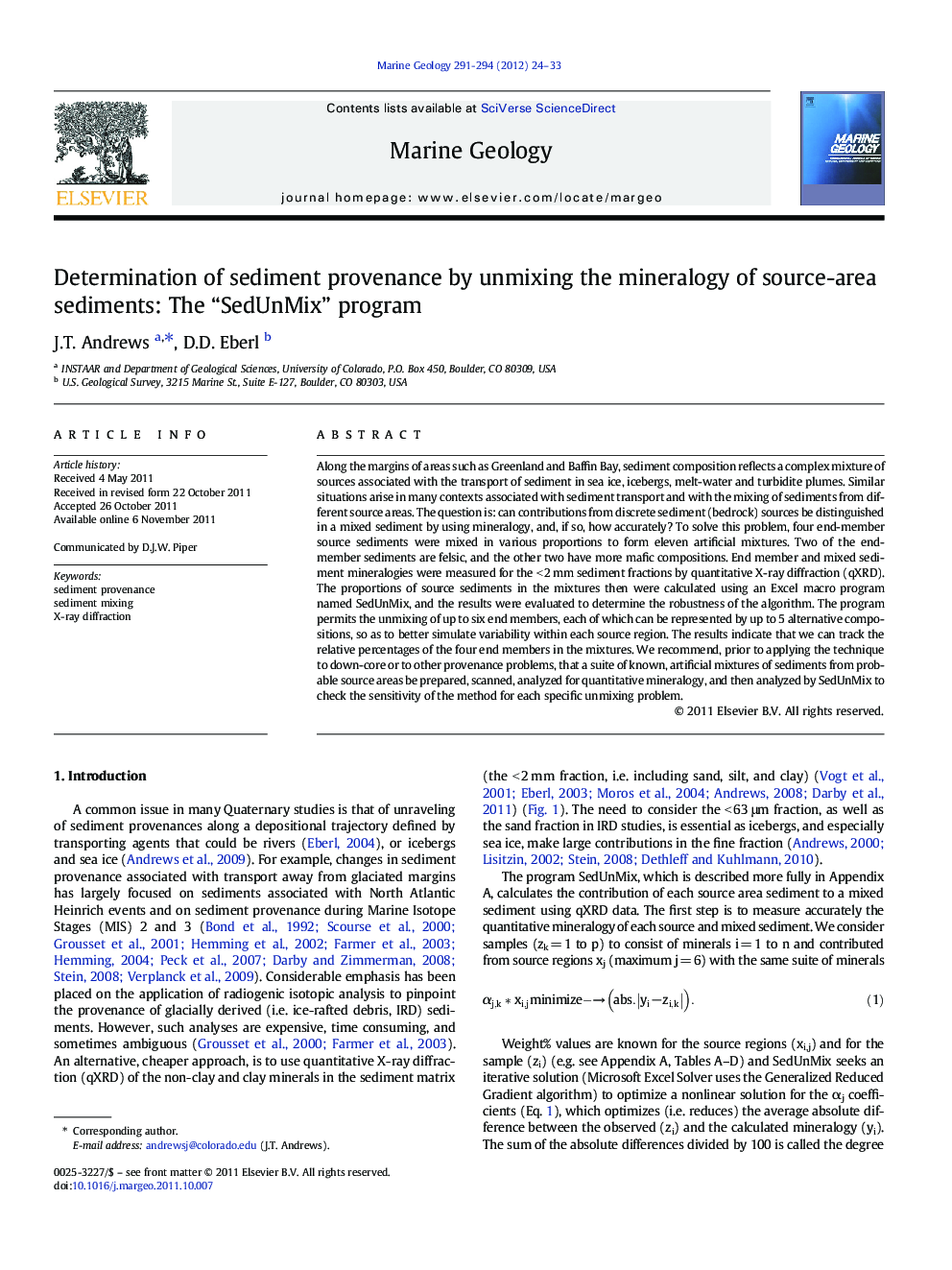| کد مقاله | کد نشریه | سال انتشار | مقاله انگلیسی | نسخه تمام متن |
|---|---|---|---|---|
| 4718627 | 1639129 | 2012 | 10 صفحه PDF | دانلود رایگان |

Along the margins of areas such as Greenland and Baffin Bay, sediment composition reflects a complex mixture of sources associated with the transport of sediment in sea ice, icebergs, melt-water and turbidite plumes. Similar situations arise in many contexts associated with sediment transport and with the mixing of sediments from different source areas. The question is: can contributions from discrete sediment (bedrock) sources be distinguished in a mixed sediment by using mineralogy, and, if so, how accurately? To solve this problem, four end-member source sediments were mixed in various proportions to form eleven artificial mixtures. Two of the end-member sediments are felsic, and the other two have more mafic compositions. End member and mixed sediment mineralogies were measured for the < 2 mm sediment fractions by quantitative X-ray diffraction (qXRD). The proportions of source sediments in the mixtures then were calculated using an Excel macro program named SedUnMix, and the results were evaluated to determine the robustness of the algorithm. The program permits the unmixing of up to six end members, each of which can be represented by up to 5 alternative compositions, so as to better simulate variability within each source region. The results indicate that we can track the relative percentages of the four end members in the mixtures. We recommend, prior to applying the technique to down-core or to other provenance problems, that a suite of known, artificial mixtures of sediments from probable source areas be prepared, scanned, analyzed for quantitative mineralogy, and then analyzed by SedUnMix to check the sensitivity of the method for each specific unmixing problem.
► Uses quantitative X-ray diffraction to determine sediment from one to six sources.
► SedUnMix uses the “Solver” in Excel to minimize observed and predicted differences.
► Mixtures from four end members verify that SedUnMix correctly detects changes.
► Several statistics indicate that the approach is reasonable.
► We suggest, prior to downcore studies, that mixtures of sediments be processed.
Journal: Marine Geology - Volumes 291–294, 1 January 2012, Pages 24–33